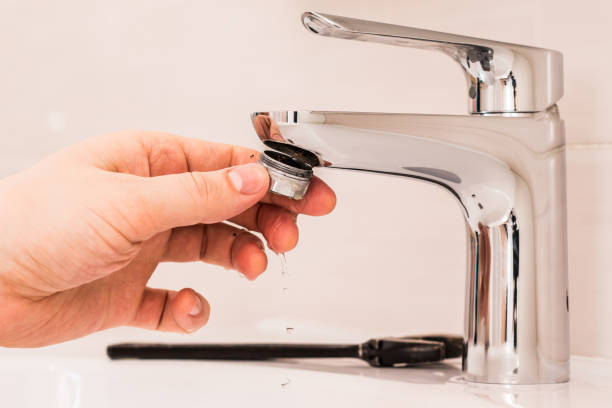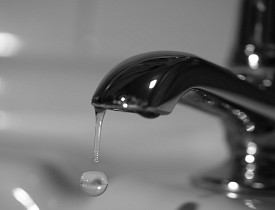The Factors Behind Fixing a Faulty Faucet
The Factors Behind Fixing a Faulty Faucet
Blog Article
They are making a number of good annotation on the subject of How to Fix a Dripping or Leaky Faucet in general in this content underneath.

Trickling taps could feel like a small trouble, yet their effect exceeds just the inconvenience of the audio. From drainage to sustaining unneeded economic expenses and health and wellness dangers, disregarding a dripping faucet can lead to numerous effects. In this write-up, we'll delve into why it's essential to address this usual family problem quickly and effectively.
Wastage of Water
Ecological Effect
Dripping taps add considerably to water wastefulness. According to the Epa (EPA), a single tap trickling at one drip per second can waste greater than 3,000 gallons of water annually. This not only pressures water resources but additionally impacts environments and wild animals dependent on them.
Step-by-Step Guide to Repairing a Dripping Faucet
Tools Required
Before trying to take care of a leaking tap, gather the needed tools, including an adjustable wrench, screwdrivers, replacement components (such as washing machines or cartridges), and plumber's tape.
Common Tap Issues and Their Solutions
Identify the sort of faucet and the specific concern causing the drip. Usual problems consist of worn-out washing machines, rusty valve seats, or faulty O-rings. Describe producer guidelines or online tutorials for detailed guidance on repair services.
Financial Costs
Boosted Water Costs
Beyond the ecological impact, leaking taps can inflate water expenses considerably. The built up wastefulness with time equates right into higher utility costs, which can have been avoided with timely fixings.
Potential Building Damage
Furthermore, extended trickling can bring about damage to fixtures and surface areas bordering the tap. Water accumulation can cause staining, rust, and also structural issues if left ignored, leading to extra fixing prices.
Health Concerns
Mold and Mildew Growth
The continuous existence of dampness from a trickling tap develops an ideal setting for mold and mildew and mold development. These fungis not just endanger interior air top quality yet additionally posture wellness threats, specifically for people with respiratory system problems or allergic reactions.
Waterborne Illness
Stationary water in leaking faucets can end up being a breeding ground for bacteria and various other virus, raising the threat of waterborne conditions. Pollutants such as Legionella bacteria thrive in stagnant water, possibly causing severe health problems when ingested or inhaled.
Do it yourself vs. Specialist Repair service
Benefits and drawbacks of Do It Yourself Repair
While some might try to take care of a dripping faucet themselves, do it yourself repair services include their own collection of difficulties. Without proper expertise and devices, DIY efforts can worsen the issue or lead to insufficient repair work, prolonging the trouble.
Benefits of Hiring a Specialist Plumber
Hiring a specialist plumber makes sure that the underlying reason for the trickling faucet is resolved successfully. Plumbings have the competence and equipment to identify and fix faucet issues successfully, saving time and decreasing the threat of further damage.
Ecological Responsibility
Specific Contribution to Preservation
Taking responsibility for taking care of dripping taps straightens with wider initiatives toward water preservation and environmental sustainability. Every individual's actions jointly make a significant effect on maintaining precious sources.
Lasting Living Practices
By prioritizing punctual repairs and embracing water-saving behaviors, individuals contribute to lasting living techniques that benefit both present and future generations.
Preventive Measures
Regular Maintenance Tips
To avoid leaking taps, perform regular upkeep such as cleaning aerators, checking for leakages, and changing worn-out parts quickly. In addition, take into consideration mounting water-saving tools or upgrading to more effective fixtures.
Value of Prompt Services
Addressing dripping faucets as soon as they're discovered protects against more water wastefulness and possible damages, ultimately saving both water and money in the long run.
Impact on Home Worth
Understanding of Well-Maintained Building
Keeping a residential or commercial property in good condition, including dealing with maintenance concerns like trickling taps, improves its viewed value and value among potential buyers or lessees.
Impact on Resale Worth
Qualities with well-kept plumbing fixtures, including taps, command greater resale values in the real estate market. Addressing trickling taps can contribute to a positive impact throughout home evaluations and negotiations.
Verdict
Attending to a dripping tap surpasses simple convenience; it's an essential action toward preserving water, minimizing financial prices, and securing health and property. Whether with do it yourself repair services or professional aid, acting to fix leaking faucets is a little yet impactful way to advertise responsible stewardship of sources and add to a healthier, more lasting future.
How to Fix a Leaky Faucet: Step-by-Step Repair Guide
A leaky faucet may seem like a simple annoyance, but if it's not fixed promptly, that leak could cost hundreds to potentially thousands. From water damage to mold, mildew, and high water bills, even a tiny leak can be catastrophic if left unattended. Damage like this can even affect the overall value of your home, so it's important to take the right approach for leaky faucet repair. You may need the help of a plumber in some cases, but we've got a few tips you can try on how to fix a leaky faucet before calling the pros.
Four Faucet Types
When you're learning how to fix a leaky faucet, the first step is knowing what kind of faucet you're working with! There are four common types.
Cartridge Faucets
Cartridge faucets come in one- or two-handled varieties. In one-handled cartridge faucets, hot and cold water combines in a single cartridge. In the two-handled versions, hot and cold water are controlled separately and mixed in the faucet.
Ball Faucets
Ball faucets have a single lever you push up and down to adjust the pressure and rotate to change the temperature. A slotted metal ball controls the amount of water allowed into the spout.
Compression Washer Faucets
They're the oldest type of faucet, but they're still used in many homes — especially older ones. Compression faucets have two separate handles that, when turned, raise or lower the washer that seals a water valve. This valve stops water from flowing through the faucet when it is turned off.
Disc Faucets
Disc faucets rarely need to be repaired due to their maintenance-free design. The water flow is controlled by two discs — the upper one raises and lowers against a fixed lower disc, creating a watertight seal. If your disc faucet starts leaking, you may need to replace the seals or clean residue buildup from the inlets.
Fixing a Leaky Faucet
Step 1: Turn Off the Water
Whether you're learning how to fix a leaky bathtub faucet or how to fix a leaky kitchen faucet, always turn off the water supply to your working area when you're fixing a leak. The last thing you want is a flood added to your list of things to fix.
Look for the shutoff valves below your sink or around the tub and turn them clockwise to stop the water flow. If your faucet doesn't have shutoff valves, you may need to turn off the water for the whole house. Check to make sure it's off by turning the faucet on. If nothing comes out, you're ready to start the repair.
Step 2: Take Apart the Faucet
How you disassemble your faucet depends on the type of fixture you have. You can use a flathead screwdriver to remove the caps on top of the handle or handles for cartridge and compression faucets. Inside, you should see handle screws. Unscrew these with a screwdriver to remove the handle.
Disc- and ball-style faucets will typically have an inlet screw near the handle, and removing that will reveal the interior of the faucet.
Detach the Valve Stem
For cartridge- and compression-style faucets, you'll see the inner valve stem or cartridge once you remove the faucet handles. If you have a compression faucet, unscrew the brass valve stem. If you have a cartridge faucet, pull out the cartridge. If your cartridge has been in place for a while, it may require some tools or extra force to remove it due to mineral deposits.
Examine and Replace Parts
Once you've removed the parts, check them out to confirm what needs to be replaced. You may see corroded rubber washers, O-rings, stems, or cartridges. On a ball-style faucet, check the seats and springs for damage.
If you need to repair a leaky disc faucet, check the inlet and seals on the lower disc.
Once you determine what parts must be replaced, visit your local hardware store. Bring the damaged parts with you to ensure you can purchase the correct components to replace them.
Clean Valves and Faucet Cavity
If you've removed a stem or cartridge, you may notice mineral buildup in the faucet's threads. Use white vinegar to clean the valve seat by soaking it for a few minutes, then scrub it away with a soft toothbrush and rinse with warm water. You can also clean the interior of the faucet in the same way.
Reassemble the Faucet
Once your faucet is cleaned and the required parts have been replaced, it's time to reassemble it. Put the pieces back together and slowly turn the water supply back on. Doing this slowly is crucial because too much initial water pressure can damage the new hardware you've just installed.
https://homewarranty.firstam.com/blog/how-to-fix-leaky-faucet

As a fervent person who reads about How to Fix a Dripping or Leaky Faucet , I think sharing that blog post was mandatory. Be sure to set aside a second to promote this write-up if you liked it. Thanks a lot for going through it.
Report this page